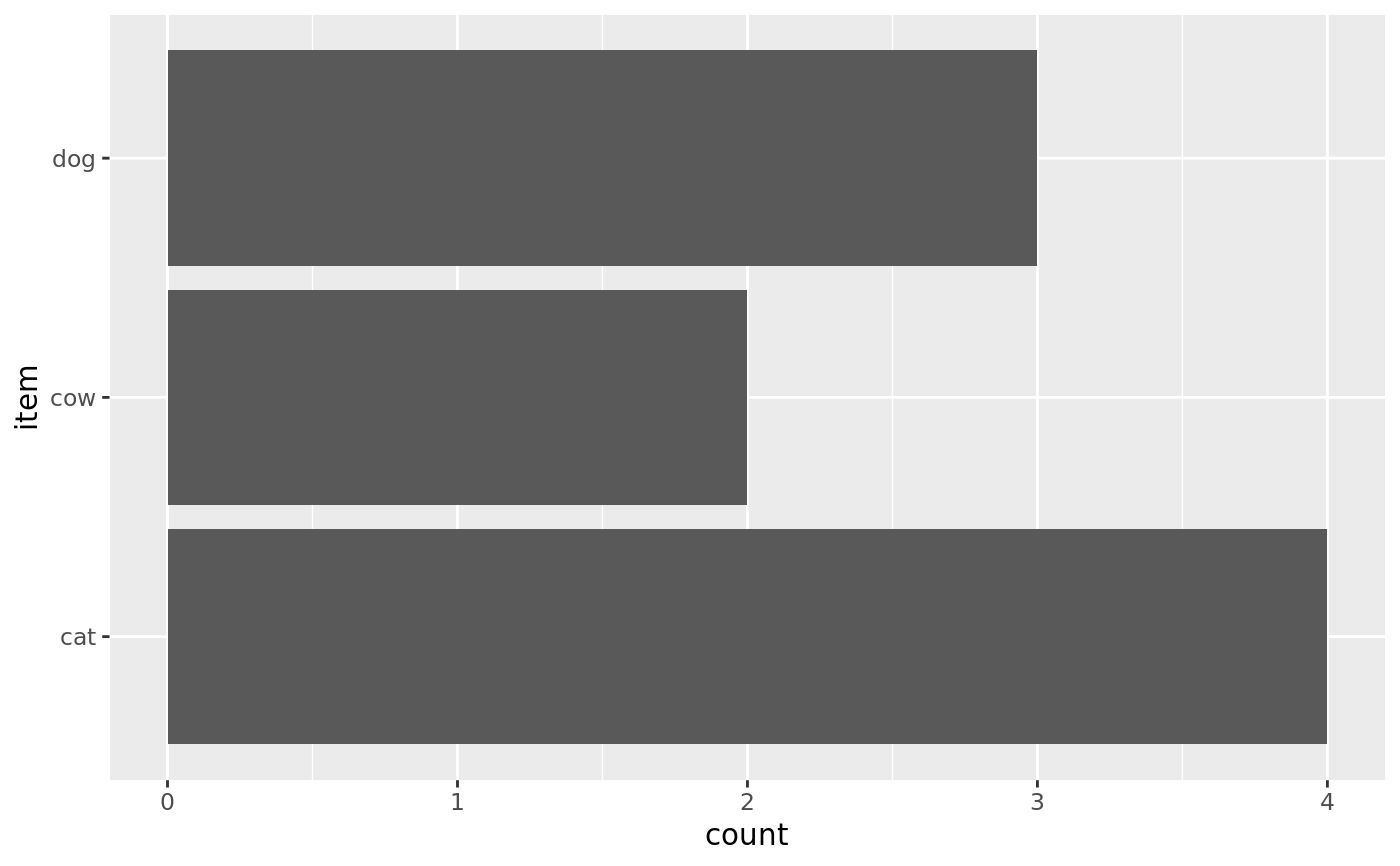Constructs S3 class for pensieve.
psOpenSorts(open_sorts) # S3 method for psLogicalOpenSorts tidy(x) # S3 method for psLogicalOpenSorts autoplot(object, by = "item")
Arguments
| open_sorts | A list of matrices, one for each participant.
Matrices must be |
|---|---|
| x | a psOpenSorts, created by |
| object | a psLogicalOpenSorts, created by |
| by | a character string, must be one of:
|
Value
Object of class psOpenSorts.
Details
Open sorting categorizations cannot be compared between participants, because each participants defines her own dimensions.
The canonical representation of open sorting data is therefore a list of matrices, one for each participant.
Every individual matrix is a psOpenSort() object, and together, they form a psOpenSorts() list.
The rows in these matrices are the items, the columns are the dimensions, and cells are the assignment.
Optional dimension descriptions are included as attributes of the matrices.
Methods (by generic)
tidy: Summarize list of open sortsautoplot: plots Summary
See also
Other S3 classes from pensieve:
correlate(),
extract(),
psClosedSorts(),
psGrid(),
psItemContent(),
psOpenSort(),
psPeople(),
score()
Examples
# create single open sort ==== # Lisas open sort, unnamed descriptions (matched by index) losort <- matrix( data = c(TRUE, FALSE, FALSE, FALSE, TRUE, FALSE), nrow = 3, dimnames = list(items = c("cat", "dog", "cow"))) descriptions <- c( "a pet which largely takes care of itself", NA # dimension is assigned, but not described (not a problem) ) lisa <- psOpenSort(osort = losort, descriptions = descriptions) # Peters open sort, named descriptions (*also* only matched by index) losort <- matrix( data = c(TRUE, TRUE, FALSE, TRUE, FALSE, FALSE, FALSE, FALSE, TRUE), nrow = 3, dimnames = list( items = c("cat", "dog", "cow"), categories = c("in_homes", "quiet", "herbivore") )) descriptions <- c( in_homes = "Animal found in peoples homes.", quiet = "Does not make a lot of noise.", herbivore = "Eats plants.") # defined, but never TRUE (not a problem) peter <- psOpenSort(osort = losort, descriptions = descriptions) # coercion methods peter_m <- as_psOpenSort(osort = as.matrix(x = losort), descriptions = descriptions) peter_df <- as_psOpenSort(osort = as.data.frame(x = losort), descriptions = descriptions) # Rebeccas open sort, without any descriptions provided losort <- matrix( data = c(FALSE, FALSE, TRUE, TRUE, TRUE, FALSE), nrow = 3, dimnames = list(handles = c("cat", "dog", "cow"))) rebecca <- psOpenSort(osort = losort, descriptions = NULL) # Ira open sort, with some problems losort <- matrix( data = c( FALSE, FALSE, FALSE, # this is dropped, b/c there is just no valuable information here, TRUE, TRUE, TRUE, # same problem; no variance FALSE, FALSE, FALSE, # also no variance, but there *is* a corresponding description, # so we're setting column to NA and keeping the description NA, TRUE, FALSE), # you can also have *actual* NAs nrow = 3, byrow = FALSE, dimnames = list(handles = c("cat", "dog", "cow")) ) descriptions <- c(NA, NA, "mammals", NA) ira <- suppressWarnings(as_psOpenSort(osort = losort, descriptions = descriptions)) # this gives appropriate warning messages # psOpenSort() would error out; only coercion method will attempt fix # ordinally and intervally scaled sorts are also possible, but currently unsupported tyler <- matrix( data = as.integer(c(1, 2, 2, 1)), nrow = 2, ) tyler <- psOpenSort( osort = tyler, scale = "ordinal") # defaults to implicit class of base type roberta <- matrix( data = c(2.2, 4.3, -2.8, 0), nrow = 2 ) roberta <- psOpenSort(osort = roberta) # Creation ==== # you can combine individual sorts into a list ==== los <- psOpenSorts(open_sorts = list(lisa = lisa, peter = peter, rebecca = rebecca)) # or create psOpenSorts from a more convenient input ==== # recreate messy format from canonical form (don't do this at home) ass <- pensieve:::make_messy(open_sorts = los)$ass desc <- pensieve:::make_messy(open_sorts = los)$desc # these two can be conveniently entered in a spreadsheet program ass#> lisa peter rebecca #> cat "A" "A, B" "B" #> dog "B" "A" "B" #> cow "" "C" "A"desc#> lisa peter #> A "a pet which largely takes care of itself" "Animal found in peoples homes." #> B NA "Does not make a lot of noise." #> C NA "Eats plants." #> rebecca #> A NA #> B NA #> C NAlos_from_messy <- as_psLogicalOpenSorts( logical_open_sorts = ass, descriptions_messy = desc, keep_LETTERS = FALSE) ggplot2::autoplot(object = los)
